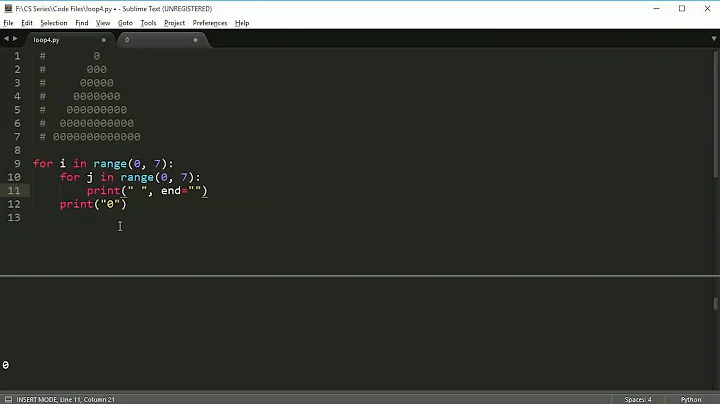Python vectorizing nested for loops
Solution 1
Approach #1
Here's a vectorized approach -
m,n,r = volume.shape
x,y,z = np.mgrid[0:m,0:n,0:r]
X = x - roi[0]
Y = y - roi[1]
Z = z - roi[2]
mask = X**2 + Y**2 + Z**2 < radius**2
Possible improvement : We can probably speedup the last step with numexpr module -
import numexpr as ne
mask = ne.evaluate('X**2 + Y**2 + Z**2 < radius**2')
Approach #2
We can also gradually build the three ranges corresponding to the shape parameters and perform the subtraction against the three elements of roi on the fly without actually creating the meshes as done earlier with np.mgrid. This would be benefited by the use of broadcasting for efficiency purposes. The implementation would look like this -
m,n,r = volume.shape
vals = ((np.arange(m)-roi[0])**2)[:,None,None] + \
((np.arange(n)-roi[1])**2)[:,None] + ((np.arange(r)-roi[2])**2)
mask = vals < radius**2
Simplified version : Thanks to @Bi Rico for suggesting an improvement here as we can use np.ogrid to perform those operations in a bit more concise manner, like so -
m,n,r = volume.shape
x,y,z = np.ogrid[0:m,0:n,0:r]-roi
mask = (x**2+y**2+z**2) < radius**2
Runtime test
Function definitions -
def vectorized_app1(volume, roi, radius):
m,n,r = volume.shape
x,y,z = np.mgrid[0:m,0:n,0:r]
X = x - roi[0]
Y = y - roi[1]
Z = z - roi[2]
return X**2 + Y**2 + Z**2 < radius**2
def vectorized_app1_improved(volume, roi, radius):
m,n,r = volume.shape
x,y,z = np.mgrid[0:m,0:n,0:r]
X = x - roi[0]
Y = y - roi[1]
Z = z - roi[2]
return ne.evaluate('X**2 + Y**2 + Z**2 < radius**2')
def vectorized_app2(volume, roi, radius):
m,n,r = volume.shape
vals = ((np.arange(m)-roi[0])**2)[:,None,None] + \
((np.arange(n)-roi[1])**2)[:,None] + ((np.arange(r)-roi[2])**2)
return vals < radius**2
def vectorized_app2_simplified(volume, roi, radius):
m,n,r = volume.shape
x,y,z = np.ogrid[0:m,0:n,0:r]-roi
return (x**2+y**2+z**2) < radius**2
Timings -
In [106]: # Setup input arrays
...: volume = np.random.rand(90,110,100) # Half of original input sizes
...: roi = np.random.rand(3)
...: radius = 3.4
...:
In [107]: %timeit _make_mask(volume, roi, radius)
1 loops, best of 3: 41.4 s per loop
In [108]: %timeit vectorized_app1(volume, roi, radius)
10 loops, best of 3: 62.3 ms per loop
In [109]: %timeit vectorized_app1_improved(volume, roi, radius)
10 loops, best of 3: 47 ms per loop
In [110]: %timeit vectorized_app2(volume, roi, radius)
100 loops, best of 3: 4.26 ms per loop
In [139]: %timeit vectorized_app2_simplified(volume, roi, radius)
100 loops, best of 3: 4.36 ms per loop
So, as always broadcasting showing its magic for a crazy almost 10,000x speedup over the original code and more than 10x better than creating meshes by using on-the-fly broadcasted operations!
Solution 2
Say you first build an xyzy array:
import itertools
xyz = [np.array(p) for p in itertools.product(range(volume.shape[0]), range(volume.shape[1]), range(volume.shape[2]))]
Now, using numpy.linalg.norm,
np.linalg.norm(xyz - roi, axis=1) < radius
checks whether the distance for each tuple from roi is smaller than radius.
Finally, just reshape the result to the dimensions you need.
Related videos on Youtube
Kambiz
Alas, after a certain age every man is responsible for his face. ~Camus
Updated on May 10, 2020Comments
-
Kambiz about 4 years
I'd appreciate some help in finding and understanding a pythonic way to optimize the following array manipulations in nested for loops:
def _func(a, b, radius): "Return 0 if a>b, otherwise return 1" if distance.euclidean(a, b) < radius: return 1 else: return 0 def _make_mask(volume, roi, radius): mask = numpy.zeros(volume.shape) for x in range(volume.shape[0]): for y in range(volume.shape[1]): for z in range(volume.shape[2]): mask[x, y, z] = _func((x, y, z), roi, radius) return maskWhere
volume.shape(182, 218, 200) androi.shape(3,) are bothndarraytypes; andradiusis anint-
rayryeng over 7 yearsDid any of these answers help? Relevant page to read: How does accepting an answer work?
-
 Aaron over 7 yearsplease excuse the necropost, but A: you should accept @Divakar's post.. It's a wonderful demonstration of vectorizing with numpy, and B: you should take a look at KD trees and the ball point algorithm from
Aaron over 7 yearsplease excuse the necropost, but A: you should accept @Divakar's post.. It's a wonderful demonstration of vectorizing with numpy, and B: you should take a look at KD trees and the ball point algorithm fromscipy.spatial. It is a generalizable method for your specific problem when the data is sparse or not on a regular grid. Although it's not the best method for this exact question, It's a very good thing to know about (I recently used it myself) -
Kambiz about 7 years@Divakar your explanation was very helpful, thanks. I upvoted initially, but just recently realized purpose of the checkmark. It's done.
-
-
Bi Rico over 7 yearsApproach #2 is a lot like approach one with np.ogrid replacing np.mgrid.
-
Bi Rico over 7 yearsCan we get a timing of 'app1' with
ogridinstead ofmgrid:). -
 Divakar over 7 years@BiRico Why instead, when we can get everything :) Thanks a lot for the improvement there, looks much cleaner now!
Divakar over 7 years@BiRico Why instead, when we can get everything :) Thanks a lot for the improvement there, looks much cleaner now!





